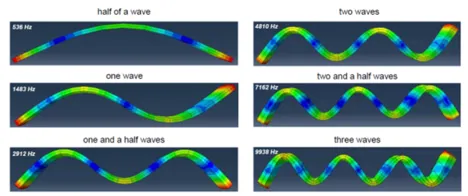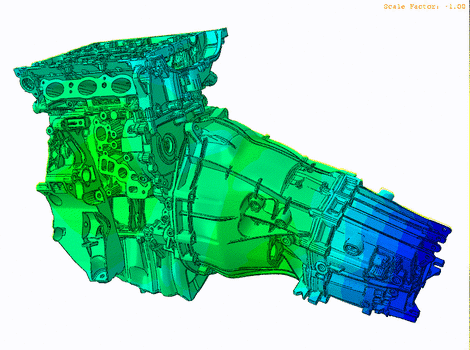Vibroacoustic Finite Element Simulations in Virtual Prototyping
Practical training (German/English), 4 SWH, Winter semester
| Lecturer (assistant) | |
|---|---|
| Language of instruction | German |
| Dates | See TUMonline |
Content

At the beginning of the course, students will receive an introduction to the fields of structural dynamics, numerical simulation and modelling. Here, specialist knowledge in the area of finite element modelling, modal analysis and the consideration of structural behavior in the frequency domain is refreshed. The methods for mapping the physical behavior in a numerical simulation is illustrated with simple monolithic structures. For every example, a comparison of the vibration modes with the analytical result takes place in order to discuss the advantages and disadvantages of the numerical modelling types. The focus here is on the parameter variables and the model, as well as the assessment of the accuracy and reliability of the numerical solutions.
The contents of the introduction are then first applied by the participants to a simplified model of an industry-related component. This automotive dashboard is calculated in modal and harmonic analyses using the commercial FE software ABAQUS/CAE and is supposed to be acoustically optimized. Among other things, boundary conditions, excitation, material parameters, discretization of the physical equations, and meshing must be dealt with.

- ... set-up and visualize numerical models of structural parts in ABAQUS/CAE
- ... assess model and parameter uncertainties and their influence on the model solution
- ... evaluate the structural dynamic behavior of an unknown structure
- ... assess and evaluate the limits of analytical and numerical modelling
Organizational Matters
Course sessions:
- Refresher on the basics of structural dynamics and numerical modelling techniques by means of small presentations by the course supervisor.
- Introduction to the commercial FE software ABAQUS/CAE with Python interface using simple examples (focus: numerical modelling, time-harmonic structural analysis).
- Independent processing of academic as well as industry-related problems by the students using ABAQUS/CAE.
- Independent work on a block task, the analysis of a dashboard, in individual or group work (max. three students per group).
Examination:
- Presentation (20 minutes) and discussion (approx. 10 minutes) as well as a written handout of up to four pages.